On Lamma Island, a Meditative Walk
Hong Kong isn’t just one island; it’s a collection of islands and a piece of the mainland. I already posted about two destinations on Lantau Island: the Big Buddha and Tai O. The other island I managed to visit (besides Hong Kong Island itself) was Lamma Island.
Lamma Island is the third largest island of Hong Kong after Hong Kong itself and Lantau. A completely car-free island, its population is small, only a few thousand, most of whom live in the northern part of the island.
I chose to visit it because my Lonely Planet guide mentioned a “family trail” as “the most interesting way to see a good portion of the island.” I didn’t actually manage to walk most of the four-kilometer-long trail, since I took a wrong turn at the start.
Instead of arriving at Yung Shue Wan, which has the most frequent ferry service, and starting the trail there, I took a ferry to the other end of the trail: Sok Kwu Wan, on the southeastern side of the island. Both the ferries leave from the same pier in Hong Kong, and I figured I’d just walk the trail backwards. Besides, the Sok Kwu Wan ferry was leaving first.
Sok Kwu Wan must be popular in summers and weekends, judging by the number of seafood restaurants along the water there. The beach nearby is a draw for day trippers as well. On the water float a series of fish farms: floats hold up the mesh cages under the surface. I didn’t stay long, though, since I was eager to walk the “family trail.”

“The best laid plans” and all that. I found the start of the trail, despite poor signage, in Sok Kwu Wan. The beginning wasn’t very promising: climbing up a long stairway, it was not very well-maintained. On one side stood a succession of graves with small altars, some quite new-looking. On the other, jungle, but with a lot of litter edging it.
But I persevered, and the further from the town I got, the more pleasant (and unlittered) the trail. It was oppressively hot and humid, though, so I took it slowly. I was surrounded by jungle: lush greenery, bamboo, bird calls, butterflies. The calm was a treat.
At the highest points in the trail I stopped to enjoy the view and the breeze that didn’t reach into the jungle below.
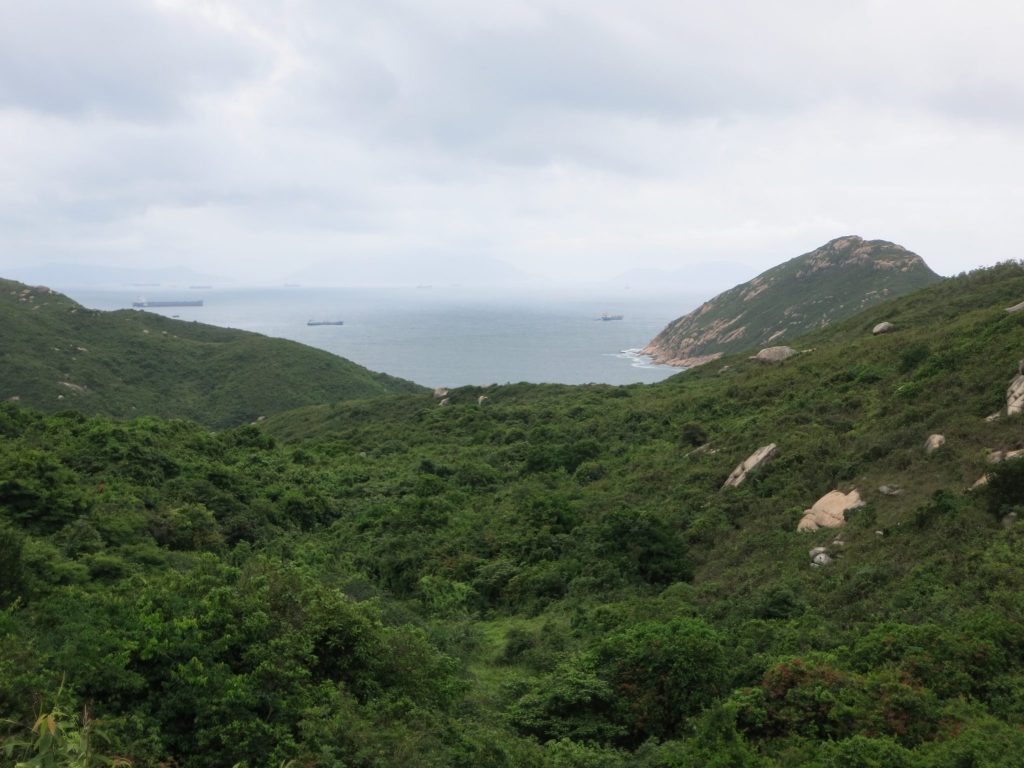
I’m not sure why they call this a “family trail,” though. It was hard going! All paved, it involves a lot of stairs or steeply inclined sections. Along the way I passed about three or four signs explaining something about the area: one about butterflies, one about volcanic rock. I suppose in someone’s mind a few educational signs are enough to designate it for families, but I wouldn’t do this with any but the most outdoorsy kid!
At some point along the way I must have taken a wrong turn. I ended up walking the red section of the trail that circles a peninsula on the southeastern side of the island through a couple of very off-the-beaten-path villages. I wasn’t aware of going off course, though, until I got to the first village, Tung O, and realized I’d gone completely in the wrong direction. I knew that a trail would return me to Sok Kwu Wan from there, and it should only take a couple of hours at most, so I continued.
At one point I passed a ghost village: a cluster of ruined houses, overgrown, crumbling, with some interesting graffiti. It was a quiet, creepy place. Why would a whole village be abandoned like that? I passed ruins in several places along the way. Only one row was signposted as being from a single family that had emigrated there from mainland China in the 19th century and then moved away again.
I apologize that the clip below is so shaky; I’m including it because it gives you an idea of the sounds I heard and also of the kinds of ruins I came across.
The trail descended to the beach after Tung O, but it wasn’t very attractive. Again, it was strewn with trash that had washed up on the sand. Apparently the north-south part of the “Family Trail” has some popular and pretty beaches. If you came to this one, on the other hand, you would certainly have it to yourself.
In Yung Shue Ha, a village made up of just a few buildings that looked like vacation places strung along the path opposite a beach, I wanted to buy something to drink, since I’d finished my water. The place seemed as much a ghost town as the ruins I’d passed, but the houses were intact. Eventually an old man shuffled out of a house long enough to sell me a drink.
The few homes and villages I walked through, I realized, were completely isolated from the world. The only way in or out was on this path (on foot, no bikes or cars) or by boat.
The trail felt a lot longer than four kilometers. I don’t know if I just took a particularly roundabout route and it was indeed longer, or if it was just the effect of the heat and humidity and the exertion of climbing and descending. So when I reached Mo Tat Wan, I decided to take a ferry back to Sok Kwu Wan. Mo Tat Wan only got a pier recently, allowing regular ferry service. Until then, they were as isolated as the rest.
Despite my wrong turn and the fact that I didn’t see the parts of Lamma Island that I set out to see, my day turned into an intense, but fascinating, exploration of a relatively little-visited section of the island. I say intense because I was completely alone for the whole day: an off-season weekday, no one else was hiking the trail. Carrying on a constant internal dialogue (and I admit it: sometimes speaking aloud), I barely saw anyone all day except in the ports.
It was quiet in that the roar of the city was too far to reach, but at the same time it was loud with insects and bird calls and the rush of the breeze when I emerged out of the undergrowth. I could focus on the little things—the sounds, the vegetation, the views, the ruins, how my body felt in the heat and humidity—and let the path take me where it would. I felt almost meditative in my isolation. I recommend it.


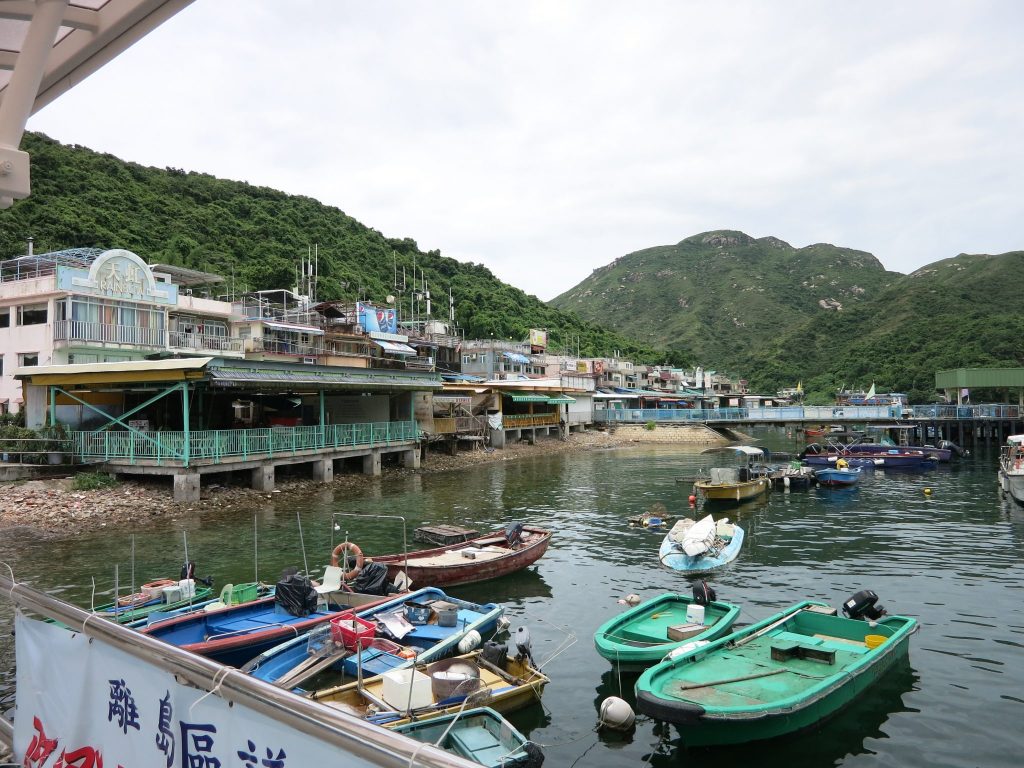
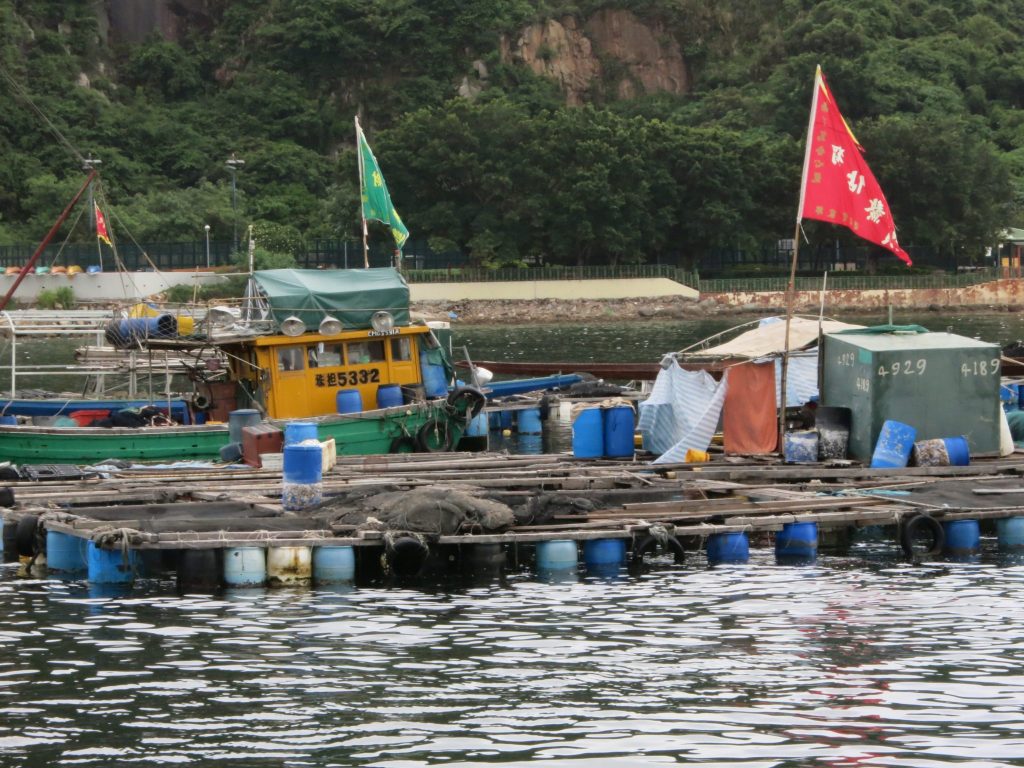
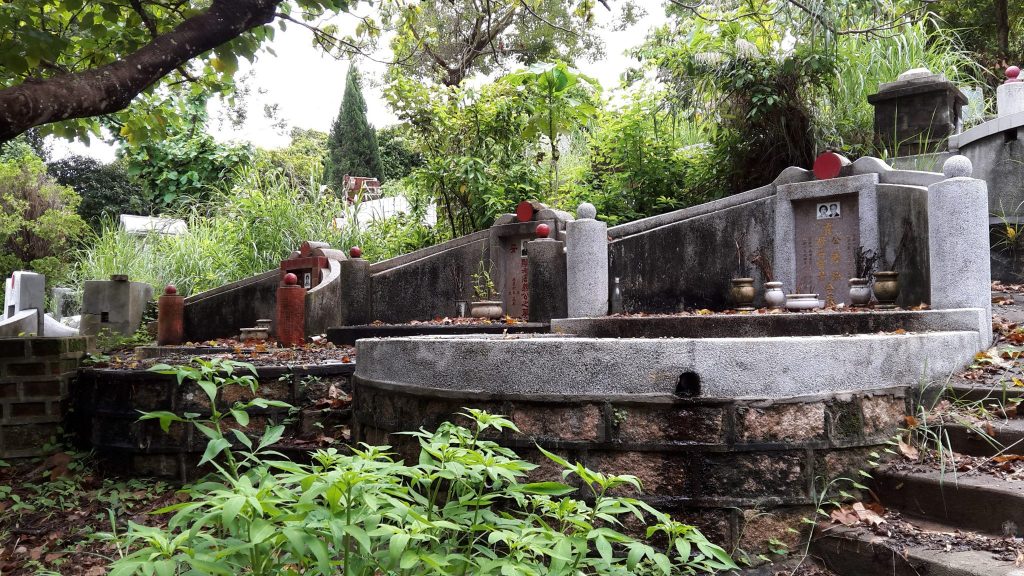
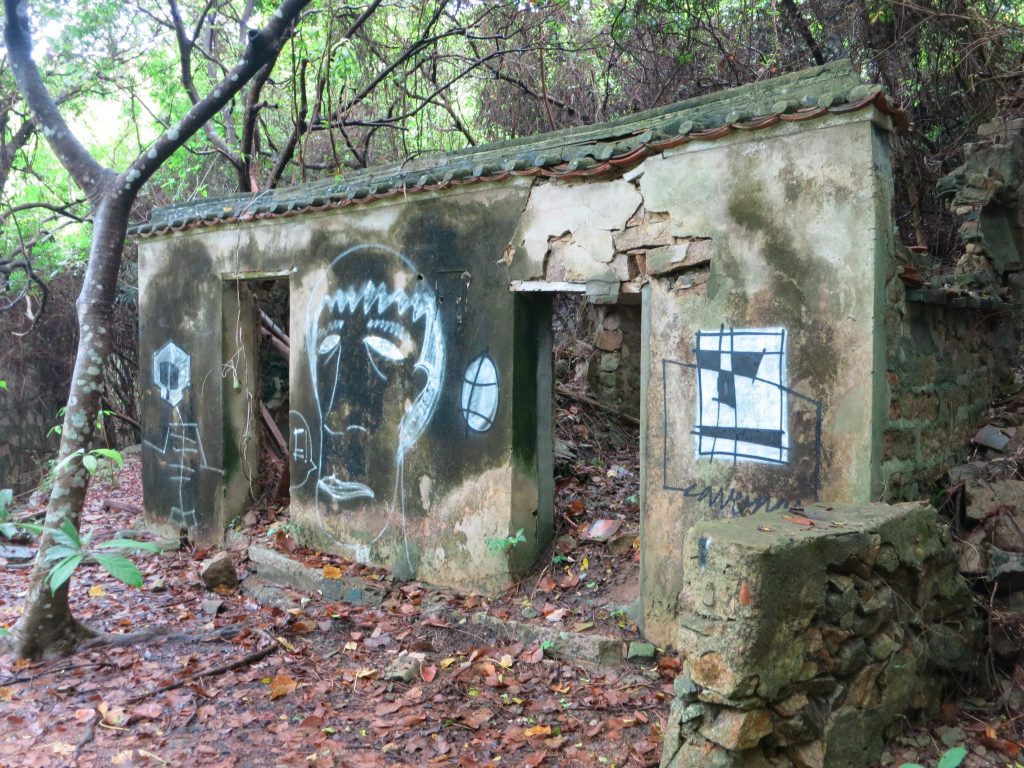
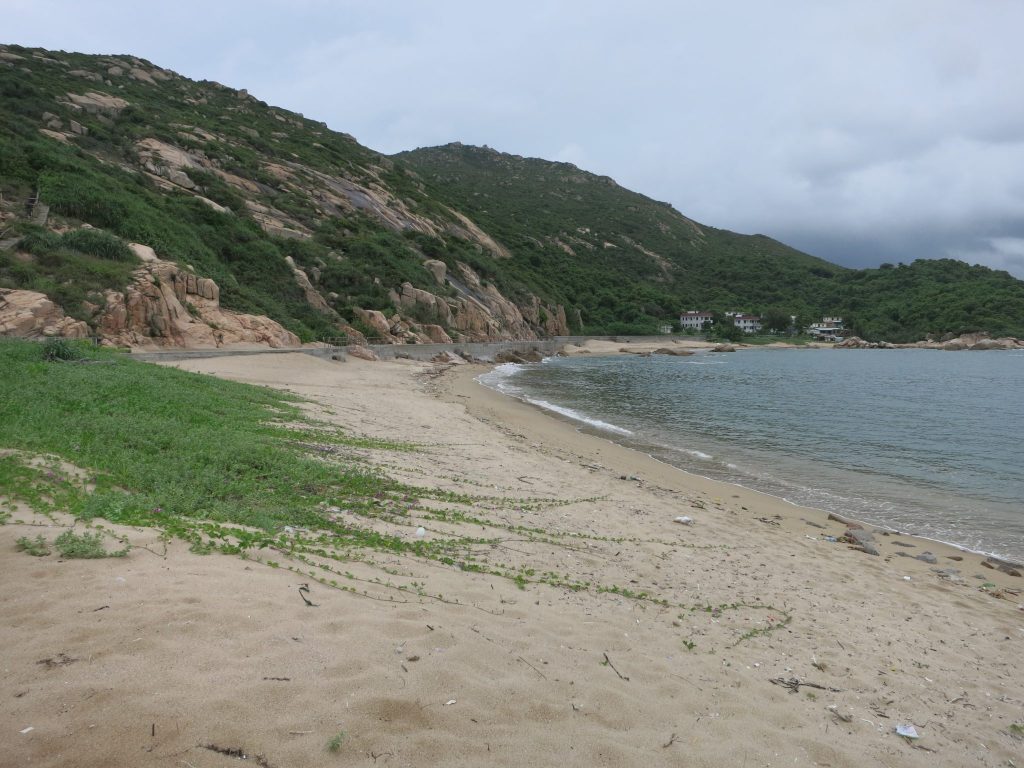
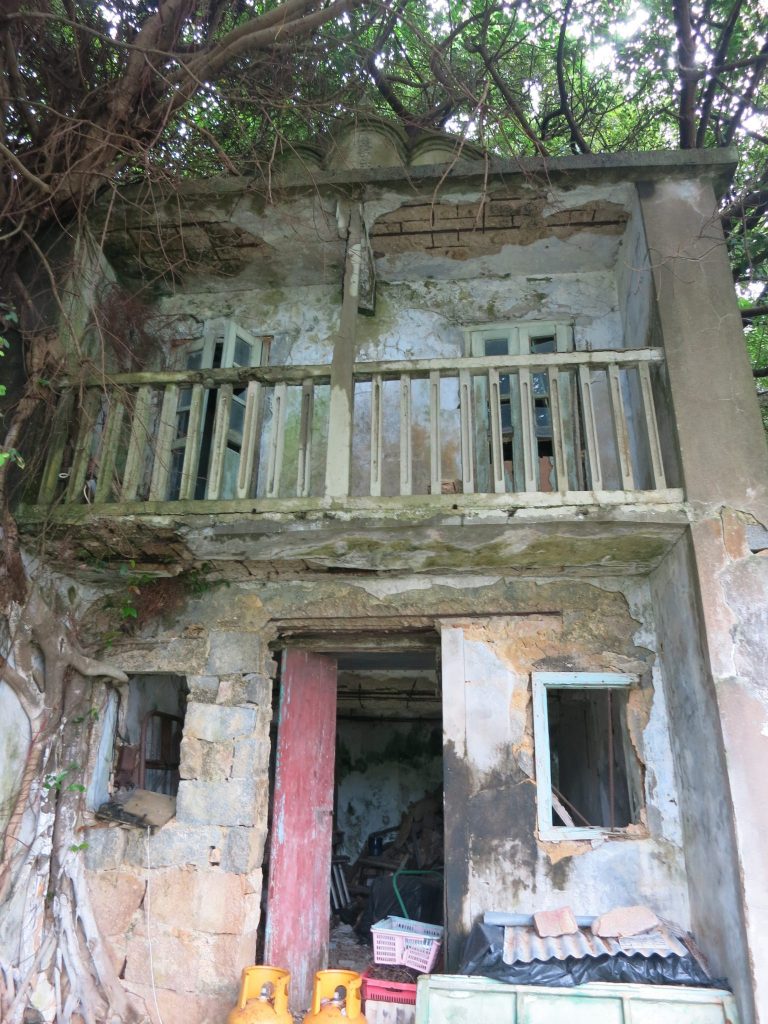

Wow! you’ve definitely gone off the usual path in Hong Kong! I agree with you that I’m not sure I’d take my kids on this so-called family trail. In the heat and humidity it would be difficult if the signposting isn’t great even though technically 4 Km is completely doable.
The ghost town sounds intriguing…makes you wonder what happened. I could kind of imagine the solitude, the meditative isolation as you described your walk…sounds like something to try every once in a while.
It was intriguing. Not really spooky: just peaceful and sad. I only included one picture of a graffiti-covered house, but it was a whole cluster of houses in a close group: about eight houses, I’d guess. Weird that they were all abandoned like that.